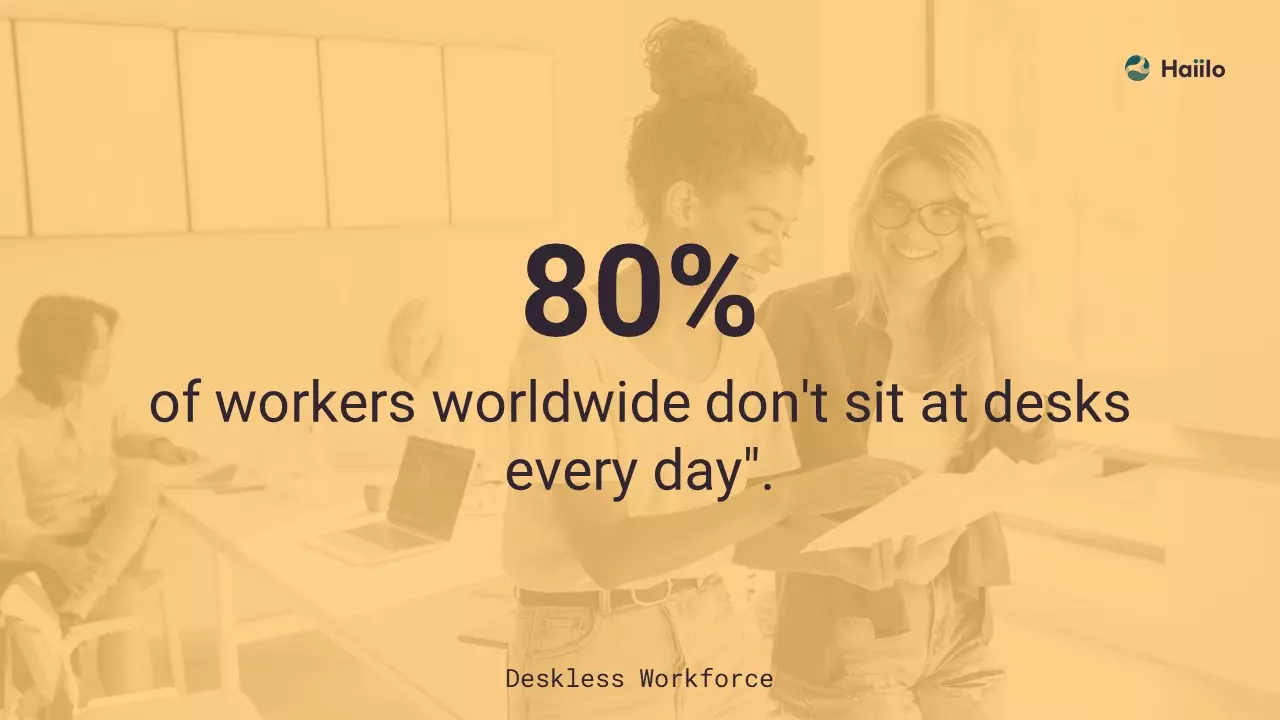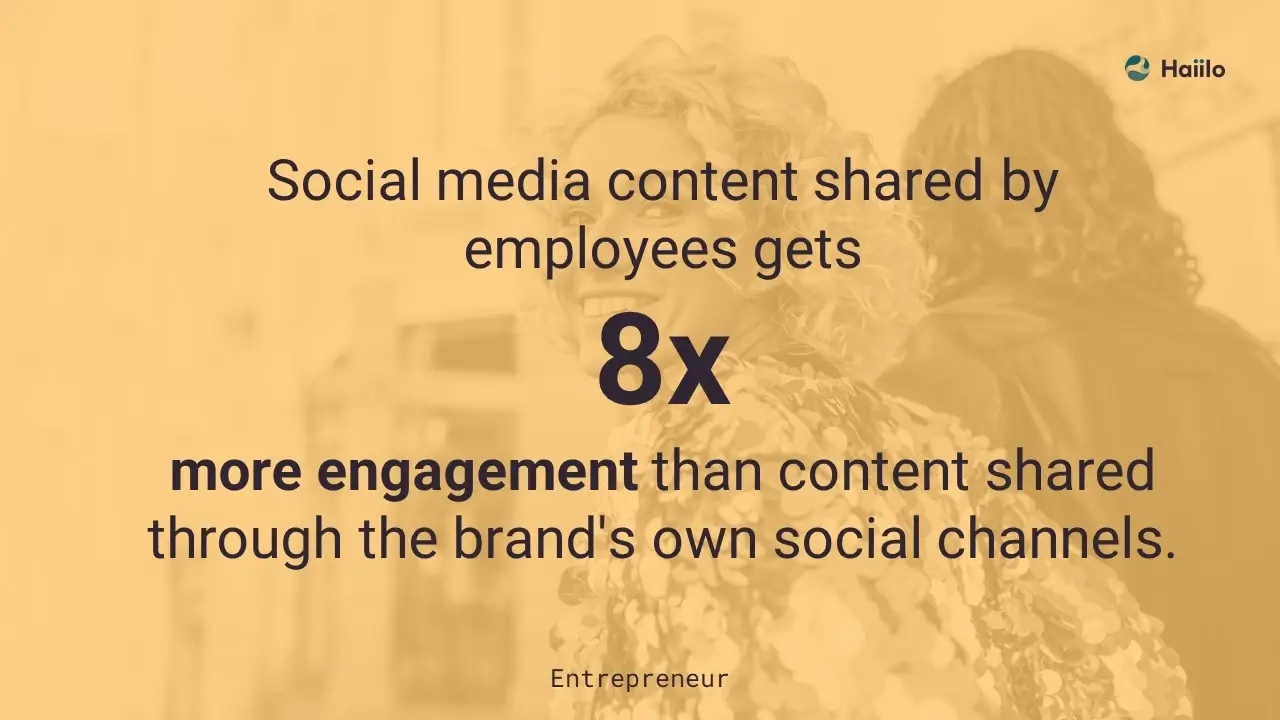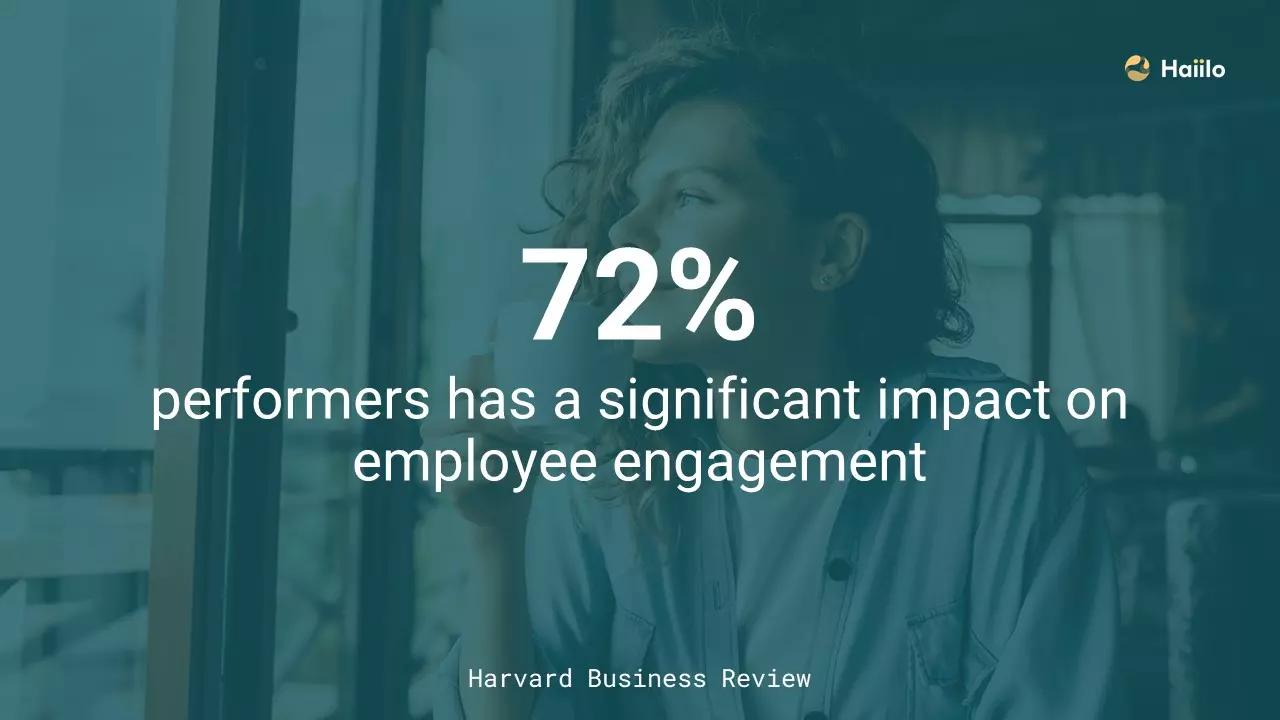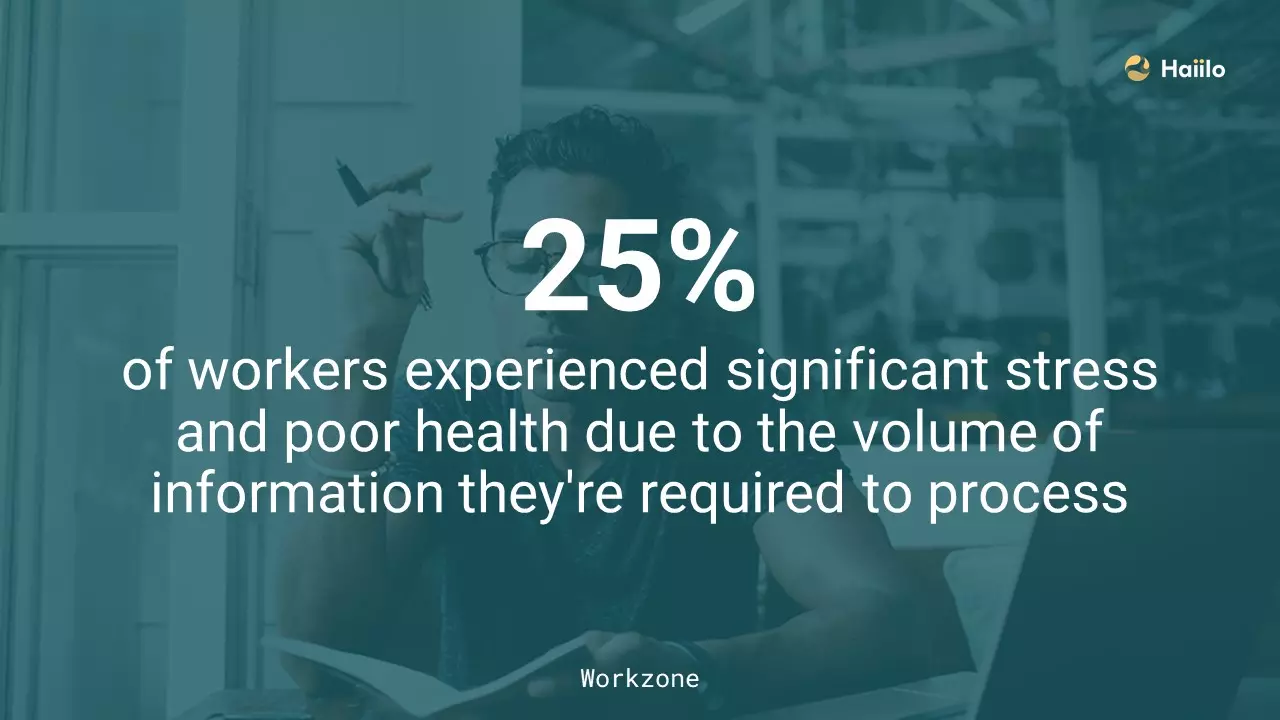The way employees communicate and collaborate has changed substantially in recent years. Employee engagement software is becoming more and more common in organizations of all sizes and for a good reason. Research shows that companies with engaged employees outperform those without by a whopping 202%.
In this blog, we will discuss some of the main reasons every company should consider implementing an employee engagement app.
What is an Employee Engagement App?
We’re used to using communication apps in our everyday lives: we use social media, chat tools, news and weather apps. We are used to getting most of the information we need in our daily lives from our smartphones.
And for frontline workers, smartphones are often the only way to get the news about their companies. In fact, a recent study found that over 83% of frontline workers don’t even have a corporate email address, and 45% don’t have access to a desktop when at work.
With that in mind, many organizations nowadays realize they need to turn to mobile workplace technology in order to keep their employees engaged and informed.
In the workplace, there are many different employee apps we can use. But employee engagement apps are modern mobile communications and engagement software that improve alignment and productivity by simplifying communications at work, connecting employees and enabling them to receive targeted and timely information from their organization.
Improve engagement and collaboration in the workplace with the right employee engagement app
Top Reasons to Implement An Employee Engagement App
Now that we’ve established the purpose of employee engagement software, let’s look at the reasons to implement one at your company.
💡 Before we move forward, check out our ultimate employee experience guide and lern how to choose the best employee experience platform!
Improved collaboration
People are used to relying on mobile technology for collaboration and solving day-to-day problems. In fact, an Alfresco survey of more than 753 knowledge workers revealed that nearly 83% of professionals depend on technology to collaborate. 82% of the participants also felt that they would feel impacted if this technology to collaborate was lost.
An employee engagement app provides tools like chats and document sharing to simplify collaboration between team members and departments regardless of the location. According to GetApp’s 2020 Productivity and Remote Workplace survey, 75% of employees say document sharing is one of the three most important productivity tools when they’re working from home. At the same time, chats help employees communicate in real-time and make decisions on the go.
Frontline workers also use technology for collaboration. Some teams of frontline workers are known to use tools like WhatsApp for solving small day-to-day issues. According to research, more than half (53%) of frontline workers use messaging apps such as WhatsApp up to six times a day for workplace communication. At the same time, 16% of workers said their HR departments are unaware of this. And chances are HR wouldn’t approve of this, as there is no way for management to guarantee that the information shared through apps like WhatsApp stays within the company.
Implementing a dedicated employee engagement app with all the required security certifications such as ISO certification and GDPR compliance means that employers can rest assured their confidential information is protected.

Engage frontline workers
Frontline workers constitute the majority of the global workforce. Various industries all over the world such as retail, hospitality, healthcare, production, manufacturing, construction, and agriculture manage workers that don’t have designated working spaces. The “Deskless Workforce” constitutes over 2.7 billion people of the global working population and, according to research data, 80% of workers worldwide don’t sit at desks every day.

As frontline workers are on the go all day, they often don’t have the time and tools needed to navigate complicated intranets or to even check their email. Many of them don’t even have a corporate email address to start with.
As a result, frontline workers often end up feeling isolated. In fact, according to the State of Deskless Workforce, over 40% of all deskless employees “don’t feel loved” by their employers.
An employee engagement app is a great way to connect with frontline workers. Comprehensive employee engagement software allows employees to access the app without a corporate email address. Deskless workers can just use their personal emails, phone numbers, and even identification numbers to get access to the company information they need. This gives them an opportunity to feel closer to their colleagues and the company as a whole, enabling them to stay up-to-date with company news and chat with colleagues on work-related matters.
In addition to that, an employee engagement app provides an opportunity to send instant push notifications to the entire staff, which is an important feature to ensure safety of all employees. Push notifications have proven to be an efficient way of communicating with deskless workers during the COVID-19 pandemic since they allowed the managers to inform employees of the changes to their work schedules and new governmental guidelines in a timely manner.
Moreover, being able to monitor who has read a piece of communications and who hasn’t is key for employee engagement apps. Whether this is due to policy reasons or to ensure something like an important safety update was read by everyone, knowing who is engaged and who needs a reminder is crucial.
Lastly, the fact that an employee engagement and internal communication apps provide an opportunity to access all the important information through a smartphone is a game-changer for frontline workers that normally don’t have desks.
📚Read on: Change Management: Definition, Best Practices & Examples
Unlock true employee advocacy
Employee advocacy is the process by which employees promote and share messages about the business they work for, along with its products and services, to their social media followers and friends.
According to Entrepreneur, social media content shared by employees gets 8 times more engagement than content shared through the brand’s own social channels and is shared 25 times more frequently.

With that in mind, it’s no surprise many organizations are now looking into solutions providing employee advocacy features. Since social media is mostly consumed on mobile, it’s logical to expect your content to be shared more if it’s first seen on mobile devices as well. This is why it’s important to look for a mobile-first technology to turn all your employees into brand ambassadors.
Comprehensive employee engagement apps provide advocacy features that make sharing content as easy as clicking a single button. They are also able to integrate with all major social networks, reaching beyond just LinkedIn, Facebook, and Twitter, and enabling sharing to networks such as WeChat and Xing as well.
Employee advocacy is not just a way to boost your company content, it can also play a major role in boosting employee engagement and the feeling of unity among employees. Advocacy features within an employee engagement app help gamify the experience and create buzz around your content. They have leaderboards visible to all employees, which reflects how well employees stack up with their peers in driving traffic and engagement to the messages they share. This adds an element of competition that encourages your employees to share more content.
Another important benefit of this gamification feature is that it ensures employees get recognition for their brand ambassadorship. And there’s no doubt that recognition is the special sauce that keeps your employees engaged. A study conducted by Harvard Business Review found that 72% of employees say recognition given for high performers has a significant impact on employee engagement.

💡 As proper workplace communication can also be a good motivator for employees, check out our blog about the top 5 communication skills in the workplace.
Reduce information overload and improve employee wellbeing
In their day-to-day work life, employees have to deal with a lot of information being communicated to them through a variety of channels. This has a negative impact on employee wellbeing and employee experience in the workplace. In fact, 25% of workers experienced significant stress and poor health due to the volume of information they’re required to process, and 68% of managers felt that information overload has had a negative impact on their personal and professional relationships.

Another study has revealed that employees deal with roughly 115 emails per day and yet, they miss out on one-third of the information exchanged through emails. Broadly speaking, employees spend on average 2.5 hours per day looking for the information they need to do their jobs.
In order to improve employee wellbeing and make it easy for employees to find the information they are looking for, organizations are now looking into employee engagement software that is capable of consolidating different communications channels under one roof, hence becoming one central hub of information for employees.
Advanced employee engagement apps provide granular segmentation allowing admins to filter the content their employees receive by role, department, location, language, and more. This way each employee only sees the information that is relevant to them, which helps them save time and stay productive.
Get access to valuable data and insights on employee engagement
Measuring employee engagement is a challenging task. It takes setting the right KPIs and access to the right technology for HR and internal communications departments to truly see whether their work yields the results they’re hoping to achieve.
A proven technique of measuring employee engagement is arranging anonymous polls to measure employee engagement and satisfaction. This is why best-in-class employee engagement apps now provide such features to help managers quickly gather feedback from their employees. This enables management to get an understanding of how employees are feeling and how aligned they are with the goals and vision of the organization.
Moreover, advanced employee engagement apps allow monitoring real-time engagement analytics. This allows you to measure the health of your organization by understanding how engaged your employees are with your communications at any given point. Moreover, analytics like that allows analyzing communications across any employee segment: you can drill down to a specific team and location and get insights on what content types or formats they prefer (e.g. videos vs. text).
Advanced analytics features are also able to give you suggestions on how to improve your communications. Modern A.I.-powered analytics are able to process massive amounts of data and suggest insights on how to improve current communications as well as what types of content to produce to keep your employees engaged.
Employee Engagement App Synonyms
In the sea of workplace technology available today, it can be hard to understand all the different solutions out there. In fact, many of the solutions that have different names have similar features and functionalities. For example, software that offers just employee feedback may be listed in an employee engagement category on popular review sites such as G2.
Here are some additional examples you may find under this category:
- Employee experience platform
- Employee recognition software
- Employee feedback software
- Employee communication app
- Employee wellbeing software
- Employee productivity app
- People analytics sofwtare
The most important thing to remember when choosing a solution for your company is to look for a comprehensive solution that integrates with your existing tech stack.
Let’s take a look into which features and functionalities to look for!
What to Look for in an Employee Engagement App?
It’s an exciting time to work on improving employee engagement – there are so many employee apps out there to choose from! In fact, there are so many, it can be slightly overwhelming.
How do you pick the right one? This is an important decision, as an employee engagement app is something you roll out to the entire business. It’s vital to get it right the first time.
Here is a list of the most important features a modern employee engagement app must include:
- Content personalization and localization based on employees’ job functions, locations, spoken languages, and their interests
- Employee advocacy features with gamification capabilities to make sharing content easy and fun for employees
- Access without email address to make the app accessible for deskless workers
- Chat and document sharing to boost collaboration
- Slick mobile-first design to ensure a pleasant user experience
- Surveys and polls to help managers gather feedback on employee wellbeing
- Instant push notifications to alert employees about emergencies and content acknowledgement to ensure that these messages are being read
- Seamless integrations with other internal systems to ensure employees can access all the important information through their app
- Advanced analytics to help admins better understand employees and improve their communications efforts
The Haiilo employee engagement app ticks all the boxes above! Schedule a 15-minute intro call with our team to discuss your business goals, technology requirements and Haiilo pricing for your unique case!









